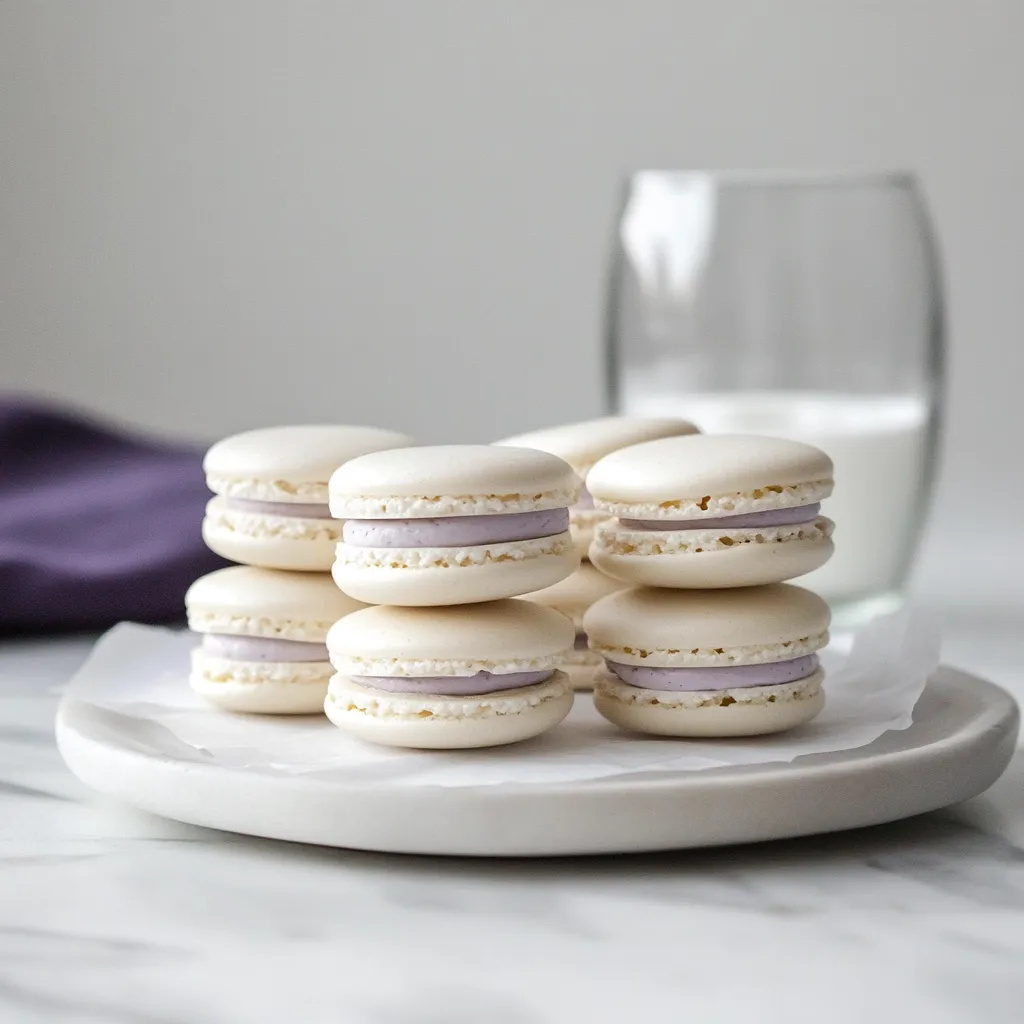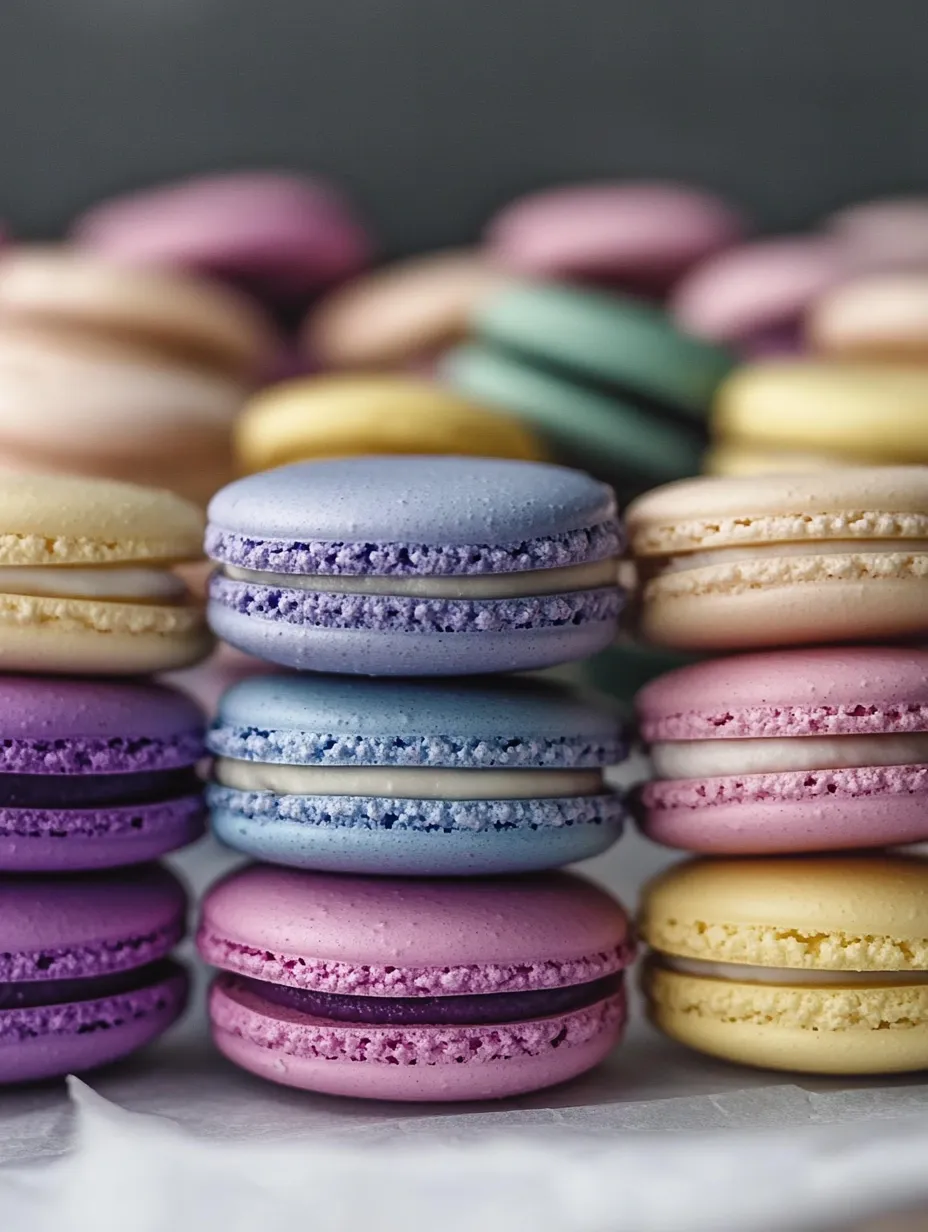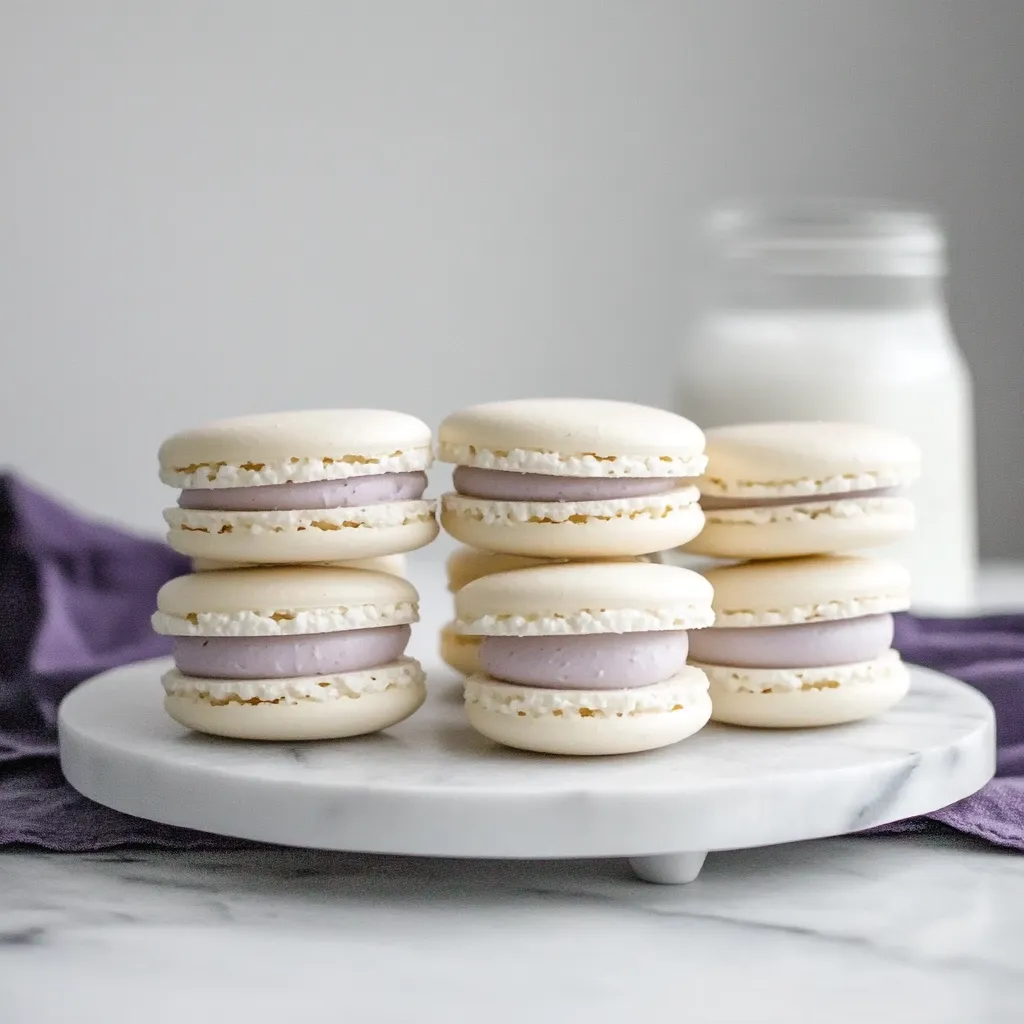 Pin it
Pin it
Turning a few basic ingredients into dainty, gem-like cookies is what makes French macarons special—they're part exact science, part creative flair. They might look tricky, but once you get the basic ideas and methods down, these fancy treats become totally doable for home bakers who practice and watch the small stuff.
After making tons of batches and learning plenty along the way, I've found that getting macarons right isn't just about following directions—it's about getting why each step matters. When I finally got that perfect batch with smooth domes, ruffled bottoms, and soft centers, it was because I finally understood how everything worked together.
Key Ingredients
- Almond flour: Needs to be extra fine and not old—keep it in the freezer so it won't go bad
- Egg whites: Should sit out until warm and rest for 1-2 days
- Granulated sugar: Has to be super fine for the meringue to work right
- Powdered sugar: Must be smooth with no clumps
- Food coloring: Stick with gel or powder types to keep the moisture balance right
 Pin it
Pin it
Detailed Method
- Step 1:
- Get everything ready first—weigh and sift all your stuff before you start. Everything needs to be exact, so grab a digital scale for measuring.
- Step 2:
- Let your egg whites sit out for 1-2 days after separating them, keeping them covered at room temp. This cuts down moisture and makes the proteins stronger.
- Step 3:
- Run your almond flour and powdered sugar through a sifter three times, tossing any big bits. This makes sure your shells turn out perfectly smooth.
- Step 4:
- In a super clean bowl, start beating your room temp egg whites with a tiny bit of salt until they get foamy. Any bit of grease will mess up your meringue.
- Step 5:
- Slowly add your fine sugar while you keep beating. Your meringue should turn stiff and shiny, holding its shape when you lift the beater.
- Step 6:
- Now's the time to add any colors or flavors to your meringue. Just remember the color will look a bit lighter after baking.
- Step 7:
- Start the macaronage by gently folding your dry mix into the meringue in three batches. This step really sets up how your cookies will turn out.
- Step 8:
- Keep folding until your batter flows like thick honey and when you drop some back in, it sinks back into itself within 20-30 seconds.
 Pin it
Pin it
My first macaron attempt taught me that cutting corners always ends badly. Now I know every fold during mixing and every minute they rest serves a real purpose in making these delicate treats work.
Perfecting Your Mixing Technique
From lots of testing, I've learned that getting your batter just right is everything: Keep track as you fold. Watch how the texture changes. Check the flow often. Stop at exactly the right moment.
Key Temperature Points
Getting great results means watching temps closely: Everything at room temperature. Careful oven settings. Right cooling period. Smart storage temps.
Fixing Common Problems
Easy answers for usual issues: Empty centers: Check your oven. Missing feet: Didn't rest long enough. Tops with cracks: Too much air trapped inside. Odd sizes: Try using guide templates.
Next-Level Methods
When you're ready to try harder stuff: Swirled colors in one shell. Hand-painted designs. Fun textured tops. Unique cookie shapes.
Time Makes Them Better
The best macarons need: Egg whites left out (1-2 days). Rest time before baking (30-60 minutes). Setting after filling (1-2 days). Warming up before eating.
In my years making macarons, I've found success comes from knowing the science while keeping the creative touch. Whether it's your first try or your hundredth batch, you'll learn something new about these amazing cookies every time.
Why They Work Chemically
Knowing the science leads to better cookies: How egg white proteins work. What sugar does as it melts. Balancing moisture levels. How heat changes their structure.
Getting Colors Just Right
Making beautiful colors means knowing: Why colors get lighter in the oven. How much gel coloring to add. Ways to mix colors together. Options for natural food dyes.
Adjusting For Your Kitchen
Tweaking for where you live: Ways to handle humidity. Changes for high altitude. Dealing with weather shifts. Setting up your kitchen right.
Exciting Flavor Combos
Going beyond the basics: Honey with lavender notes. White chocolate and matcha blend. Coffee with salty caramel. Infused Earl grey tea.
Display Like A Pro
 Pin it
Pin it
How to show them off beautifully: Color fades from light to dark. Different heights in displays. Creating cool patterns. Ways to wrap them as gifts.
Modern Macaron Styles
What's trending now: Space-inspired galaxy looks. Soft watercolor effects. Shiny metallic touches. Cute character designs.
After making so many batches and teaching lots of people, I see macarons as more than just cookies—they're where exact measurements meet creative expression. Each time you make them, you can get better at the technique while trying out new and fun ideas.
Frequently Asked Questions
- → Why do you let macarons sit before baking?
- Letting them sit forms a dry layer on top, which creates smooth tops and feet when baked.
- → Is liquid food coloring okay to use?
- Stick to gel or powder coloring, as liquid changes the batter's texture.
- → How can I tell if the meringue's ready?
- Check for stiff peaks that stand up straight when you pull the whisk out.
- → What's a perfect macaron supposed to look like?
- Smooth on top, ruffled at the bottom, with a crispy shell and a chewy inside. No hollow centers.
- → Why is sifting almond flour important?
- Sifting removes chunks and gives you smooth, bump-free macaron shells.
